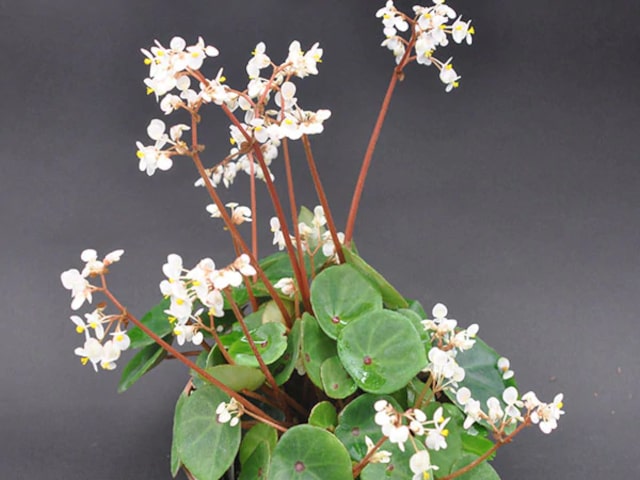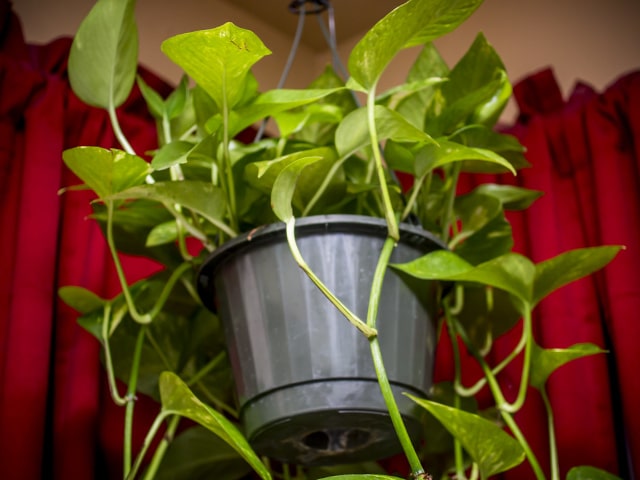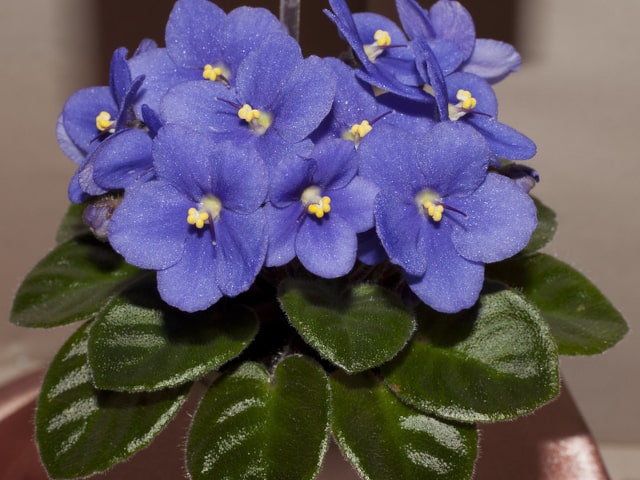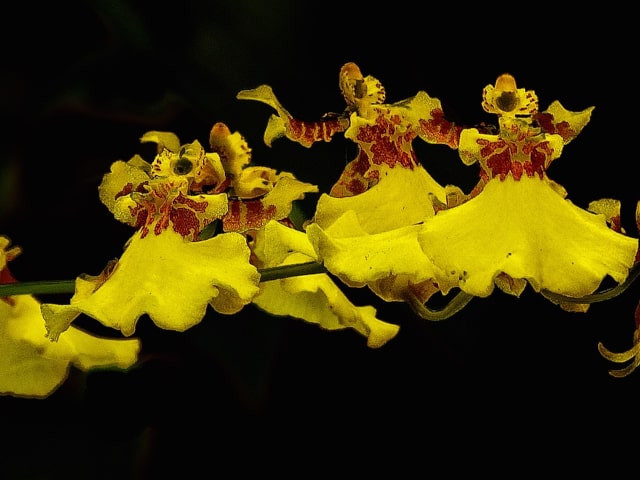
Begonia Conchifolia is a great houseplant, ideal for windowsills. It will add some lush green atmosphere to your home. Also known as Zip Begonia, Begonia Conchifolia is famous for a red dot at the centre of its round leaves, where the petiole joins the leaf at the bottom. This is a very effective look that will sure attract a lot of attention.
This plant is a favorite with many gardeners because it flowers readily inside, and it has a compact growth. The blooms of Begonia Conchifolia are white to pink in color and very fragrant, which will add a beautiful scent to your home. The flowers appear throughout the year, so your home will always be brightened by beautiful Begonia Conchifolia.
Begonia Conchifolia resembles a lot to Pilea Peperomioides, and the care requirements are very similar. The main difference becomes obvious during blooming, since these plants have very different flowers.
It is important to understand that Begonia Conchifolia is rhizomatous perennial plant that has laves growing from thick rhizomes that grow along the surface of the soil. Native to Costa Rica, Begonia Conchifolia is often used to hybridize with other species to create many different varieties.
If you wish to grow Begonia Conchifolia in your home, here are some important requirements that you need to provide to your plant:
Soil Requirements
The first thing you need to provide to your Begonia Conchifolia is adequate soil. Ideally, you will get a well-draining, loose and porous soil that is airy and filled with plenty of organic content. This is the best soil to make your Begonia Conchifolia thrive.
At the same time, keep in mind that you can successfully grow a Begonia Conchifolia in a substrate without soil. A soilless substrate may even provide some advantages because soil can often get too wet, which can be dangerous for your plant. This can lead to root rot and other issues, particularly in the warm environment inside of the home. Because of this, a mix consisting of peat moss and compost can work very well, particularly when it's coupled with an equal part of sand, vermiculite or perlite.
You can also add some nice organic substrate to the mix, both the soilless substrate and the soil itself. A good choice are pine bark or wood shavings, although you can use any other readily available organic substance. This will add to the looseness of the soil.
Another thing you should do is cover the surface of the soil with some leaf mulch. This will help trapping moisture. This is an ideal condition for the rhizomes to spread nicely and to be lush and compact.
Begonia Conchifolia prefers soil that is neutral to mildly acidic, so some organic matter is beneficial, but do not go overboard with acidity. Some coffee mix can be beneficial in smaller amounts.
If you don't want to make things complicated, using a potting mix for African Violet. This mix generally has a good mix o nutrients for your Begonia Conchifolia plants.
Light Requirements
The next thing to think about is the light. Begonia Conchifolia does not prefer strong, direct sun. Ideally, you should keep it in a spot with dappled sunlight. Because people typically keep Begonia Conchifolia on a windowsill, using sheer drapes is an ideal way to provide your plant with enough light without burning its leaves. At the same time, keep in mind that this light arrangement might not be enough in the winter months, particularly if the plant is on an eastern window. In these situations, you might provide your Begonia Conchifolia with some direct sun during the day.
Begonia Conchifolia requires this dappled light for at last several hours throughout the growing season from the spring and autumn. This light is necessary to encourage lush growth and flowering of your plant. You can get good results with artificial light, which might be a good way to go if you live in northern zones without enough sunlight.
Begonia Conchifolia Watering
An important thing to keep in mind when it comes to watering is that Begonia Conchifolia has rhizomes that serve as reserves for food and water. This allows the plant to survives irregular access to water, as well as temperature variation.
However, this is not an invitation to water your Begonia Conchifolia irregularly. Keep in mind that you need to make your plant thrive in order to encourage it to be lush and to flower richly and throughout the whole year. It means that you need to provide your Begonia Conchifolia plant with enough water.
A soil that is kept evenly moist during summers is a good solution, provided that the potting mix is well-draining. It will ensure that your plant never sits in water. Make sure to water regularly during the summer but never overwater your Begonia Conchifolia. It is best to water when you feel that the top of the soil and the mulch are dry to the touch.
For watering, it is best to use lukewarm water so your plant is never cold. This is particularly important during the winter. During these months, it is important to water your plants only sparingly.
When watering, make sure to prevent any water from getting on the foliage. Aim only at the roots. Remember that Begonia Conchifolia are susceptible to fungal problems caused by too much water and moisture, so you want to prevent these problems from happening.
Temperature and Humidity
In general, Begonia Conchifolia plants prefer warm temperatures. In the nature, they are epiphytic plants that grow at high altitudes. It means that they thrive at temperatures between 60 and 85 degrees F (15 to 30 degrees Celsius), but the ideal is around 65 degrees F (20 degrees Celsius). They should do well inside of a home and in typical room temperatures.
Keep in mind that Begonia Conchifolia cannot withstand even a bit of draft and chill. Any cold air can kill your plant very quickly. This is important to remember if you keep your Begonia Conchifolia on a balcony or a patio. Make sure to bring your plant inside as soon as temperatures reach as low as 60 degrees F (15 degrees Celsius).
When it comes to humidity, Begonia Conchifolia likes some humidity, but this is not the most crucial aspect of care. They can do well in moderate humidity present in most homes. You can improve humidity during the summer months by adding some leaf mulch on the top of the soil. Another thing you can do is to wash Begonia Conchifolia leaves once or twice per month. Wipe the leaves gently during the winter months once per week to increase the humidity. You can use humidifier in your home but do not mist your plant because it can lead to mildew.
Fertilizing Begonia Conchifolia
Begonia Conchifolia is a plant that responds well to feeding and can benefit from some fertilizing throughout the growing season. Fertilizer rich in phosphorus can be used to encourage your plant to keep blooming.
A good choice for a fertilizer is a liquid organic fertilizer that is diluted to half of the usual concentration. Apply this feeding once or twice per month. Another good feeder is fish emulsion that will make Begonia Conchifolia plant thrive. However, make sure to stop fertilizing your Begonia Conchifolia during the winter, when the plant enters dormancy.




0 Comments